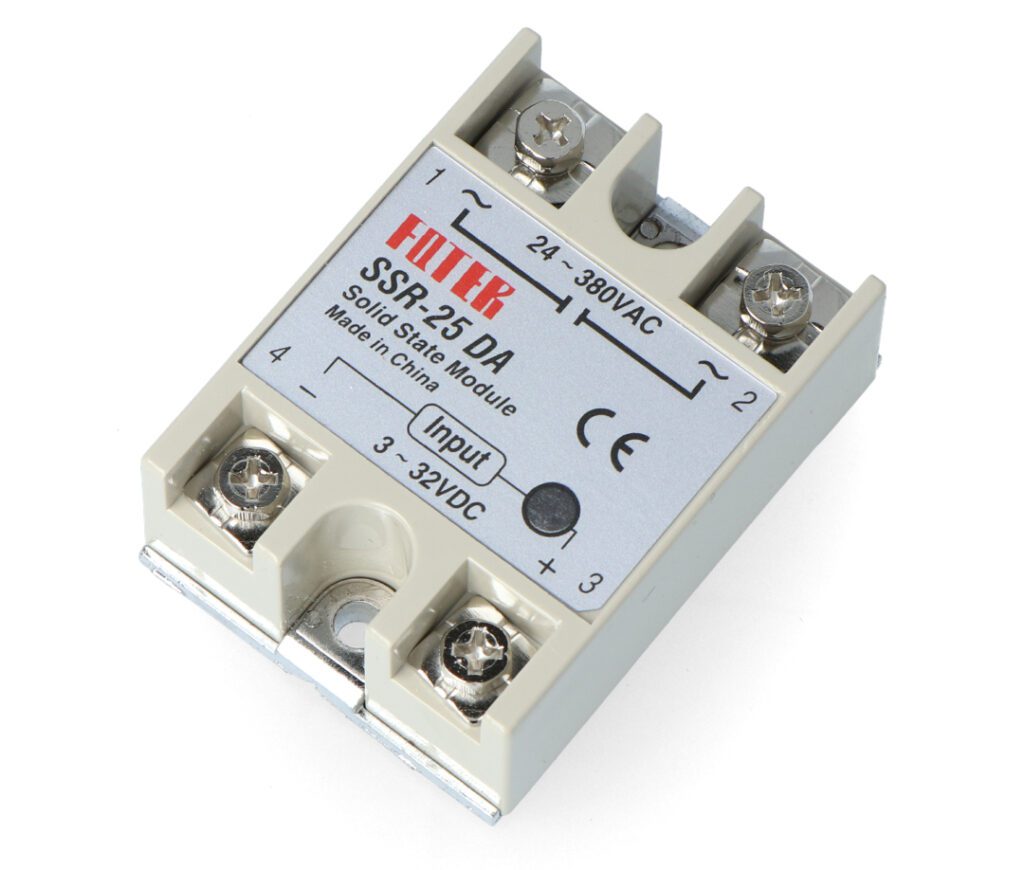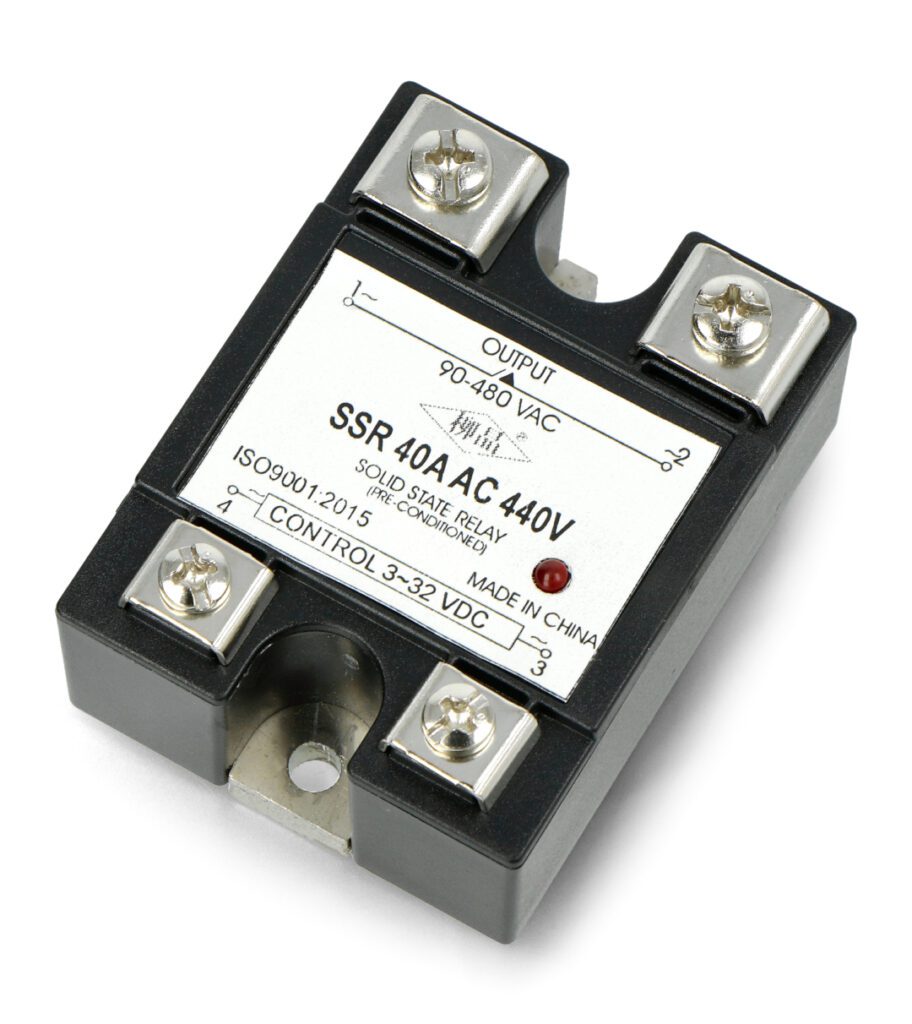Table of Contents:
Have you ever wondered what electronic components are responsible for controlling industrial processes without mechanical moving parts?
The solid-state relay is a key component that is widely used in modern automation systems.
This article takes a closer look at the construction, operation and advantages of using these small yet extremely important devices.
Learn more about their role in industry and why they are so effective in many applications.
What is a solid state relay?
Semiconductor relay takes advantage of the properties of semiconductors.
The definition of this device is that it is a component that allows a circuit to be controlled by a small input signal, using semiconductor materials such as silicon or germanium.
The solid-state relay is a great example of a device that combines relay technology with the world of electronics.
It uses the principles of diodes, transistors and thyristors.
They are responsible for switching and regulating the flow of current.
Thanks to the use of semiconductors, relays of this type are very efficient, reliable, and have a high speed of response.
They find their application in many fields of industry and technology, such as.
In motor control, lighting control or alarm systems, among others.
Solid state relay - construction and principle of operation
The design of a solid-state relay is complex yet fascinating.
It consists of several key components that together ensure its effective operation.
At the center of the device is a semiconductor switching element – usually a diode, transistor or thyristor.
This component is controlled by an input signal, which can come from various sources, such as a microcontroller or other digital circuit.
Moreover, the solid-state relay also contains an optical circuit, which serves to isolate the control circuit from the controlled circuit.
Thus, possible interference or damage can be avoided.
The principle of operation of a solid-state relay is understandable when we consider its design.
When an input signal is received, the semiconductor element is excited and begins to conduct current, resulting in the activation of the controlled circuit.
When the input signal stops arriving, current stops flowing through the semiconductor element, which deactivates the controlled circuit.
Such activity is very efficient and fast, making the solid-state relay ideal for controlling various types of devices.
Advantages and disadvantages of solid state relays
The advantages and disadvantages of the solid-state relay are important aspects to consider if you plan to use this device.
Advantages include m. in:
- efficiency – as mentioned earlier, the solid-state relay is characterized by exceptional speed and efficiency, which makes it unparalleled in controlling various types of devices;
- reliability – thanks to the use of semiconductors, these devices are extremely reliable, minimizing the risk of failure or damage;
- Multitasking – solid-state relays are used in many industrial and technical fields, from motor control to lighting control to alarm systems.
However, while the solid-state relay has many advantages, it is also worth pointing out some disadvantages:
- complex design – the complex design of this type of relay can be challenging to install or repair;
- cost – for the modern technology and advanced capabilities of the solid-state relay, we unfortunately pay a higher price compared to standard relays.
Industrial applications
The semiconductor relay’s significant use in industry is due to its remarkable efficiency, responsiveness and reliability.
These small devices play a key role in demanding industrial applications where precise control is essential for proper operation.
They are often used in industrial automation, where they provide control over a variety of devices such as motors, pumps and fans.
Thanks to their unique ability to control large circuits with a small input signal, the solid-state relay is often used in process control systems.
Another important area where the use of solid-state relay is crucial is in protecting electronic circuits from surges and overloads, thus ensuring the safety and durability of equipment.
In the lighting industry, these relays are used to precisely regulate light intensity, which translates into energy savings.
They are also often used in alarm systems, where they are used to control sirens and other warning devices.
All these applications make the solid-state relay an integral part of modern industry.
Comparison with electromechanical relays
When deciding whether to choose a solid-state or electromechanical relay, it is useful to know what their main differences are.
This comparison allows you to better understand in which situations each is most optimal.
Electromechanical relays, are based on mechanical moving parts, which means that their operation involves certain limitations.
First, their response is somewhat slower.
Secondly, due to their mechanical parts, they have a limited lifespan – over time they can wear out and require replacement.
Moreover, these relays tend to be larger and consume more power.
At the time of the comparison, the solid-state relay surpasses these challenges thanks to modern solid-state technology.
They are more efficient, reliable and fast responding.
They have no mechanical parts, which translates into longer life and durability. Below is a list of the most significant differences:
- Response speed – solid-state relays are much faster than electromechanical ones;
- dimensions-Semiconductor relays tend to be smaller, making them ideal for space-saving applications;
- Power consumption -semiconductor relays are more energy efficient;
- lifespan – solid-state relays have a longer lifespan because they do not contain wearable mechanical parts.
The future and development of solid-state relays
Continuous progress in semiconductor technology, reducing the size of devices while increasing their performance, is a phenomenon that accelerates the advantages of this type of relay.
Also, the increasing use in various industrial fields indicates the continuous development and improvement of already existing solutions.
Looking to the future, we can predict that innovations in semiconductors will create even more efficient and reliable solid-state relays.
New, unprecedented applications are also possible, which will further increase the importance of this device in industry.
The range of potential possibilities seems limitless, and the solid-state relay has every chance of becoming an even more crucial component of modern technology.
How useful was this post?
Click on a star to rate it!
Average rating 0 / 5. Vote count: 0
No votes so far! Be the first to rate this post.





















